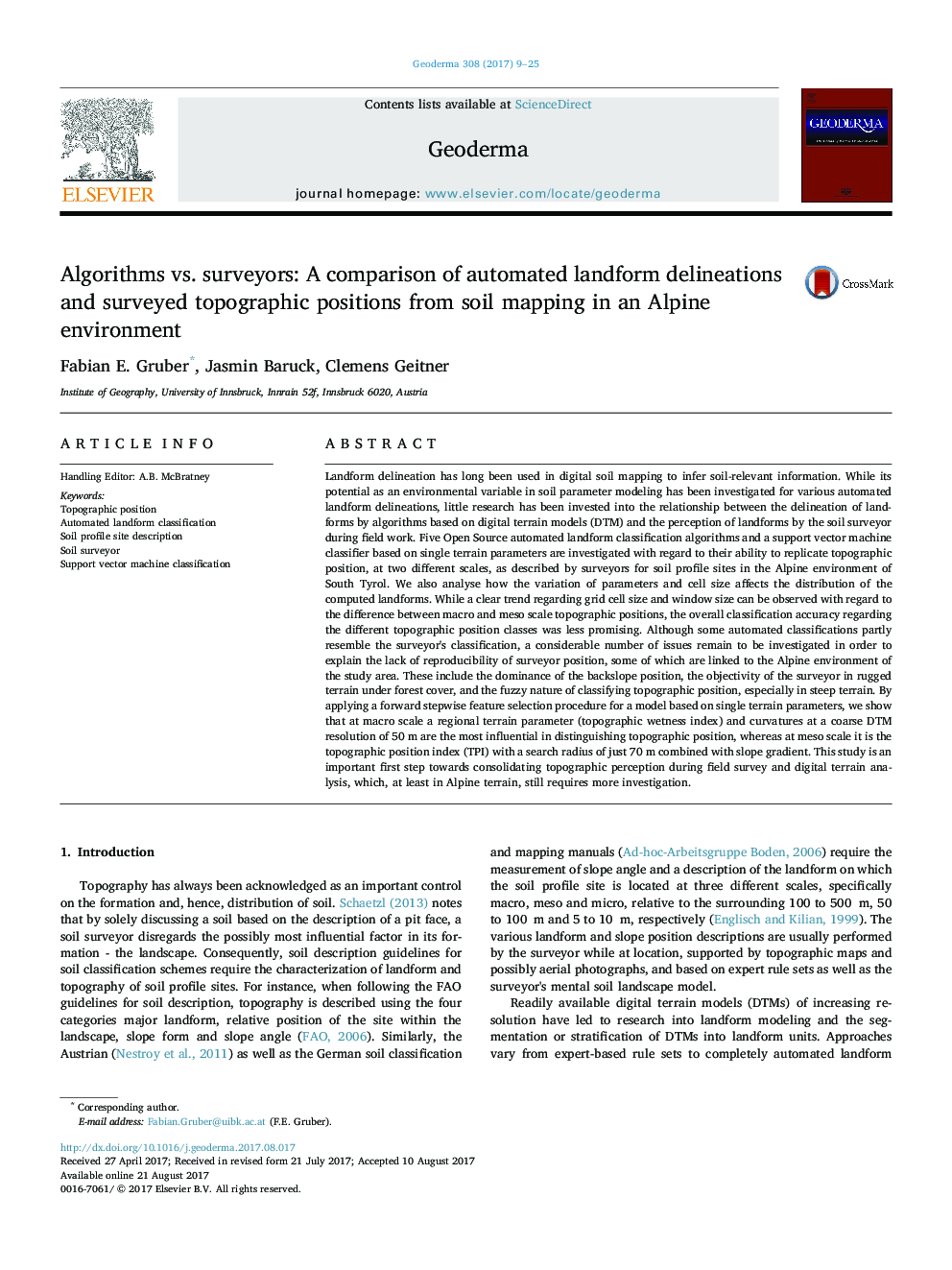| کد مقاله | کد نشریه | سال انتشار | مقاله انگلیسی | نسخه تمام متن |
|---|---|---|---|---|
| 5770545 | 1629409 | 2017 | 17 صفحه PDF | دانلود رایگان |
- Automated landform classifications are compared to mapped topographic positions.
- The investigated algorithms show comparable classification rates.
- The dominance of backslope positions in an Alpine environment is challenging.
- Cell size variation highlights differences between meso and macro scale positions.
Landform delineation has long been used in digital soil mapping to infer soil-relevant information. While its potential as an environmental variable in soil parameter modeling has been investigated for various automated landform delineations, little research has been invested into the relationship between the delineation of landforms by algorithms based on digital terrain models (DTM) and the perception of landforms by the soil surveyor during field work. Five Open Source automated landform classification algorithms and a support vector machine classifier based on single terrain parameters are investigated with regard to their ability to replicate topographic position, at two different scales, as described by surveyors for soil profile sites in the Alpine environment of South Tyrol. We also analyse how the variation of parameters and cell size affects the distribution of the computed landforms. While a clear trend regarding grid cell size and window size can be observed with regard to the difference between macro and meso scale topographic positions, the overall classification accuracy regarding the different topographic position classes was less promising. Although some automated classifications partly resemble the surveyor's classification, a considerable number of issues remain to be investigated in order to explain the lack of reproducibility of surveyor position, some of which are linked to the Alpine environment of the study area. These include the dominance of the backslope position, the objectivity of the surveyor in rugged terrain under forest cover, and the fuzzy nature of classifying topographic position, especially in steep terrain. By applying a forward stepwise feature selection procedure for a model based on single terrain parameters, we show that at macro scale a regional terrain parameter (topographic wetness index) and curvatures at a coarse DTM resolution of 50Â m are the most influential in distinguishing topographic position, whereas at meso scale it is the topographic position index (TPI) with a search radius of just 70Â m combined with slope gradient. This study is an important first step towards consolidating topographic perception during field survey and digital terrain analysis, which, at least in Alpine terrain, still requires more investigation.
Journal: Geoderma - Volume 308, 15 December 2017, Pages 9-25
